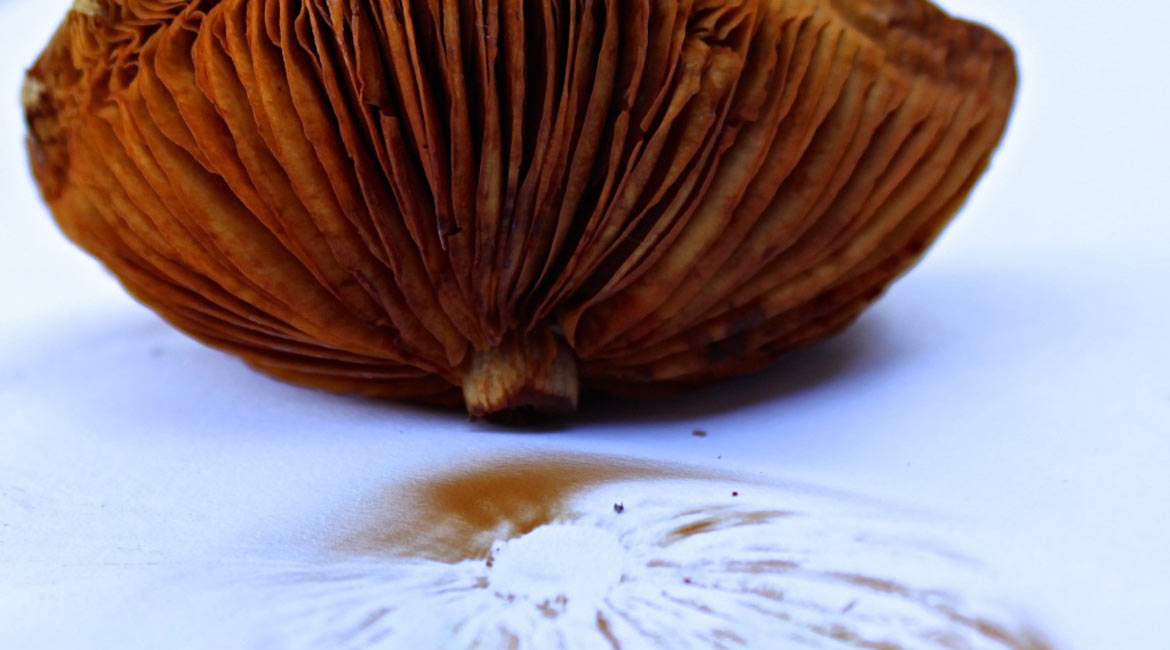Identifying trees with the venerable Meg Coates-Palgrave, the Zimbabwean dendrologist who has been studying and writing about them for 60 years, is not for those who are impulsive or prone to high emotion. As she announced on one of her ‘Know Your Tree’ courses I recently attended in Choma, a farming district two hours north of Livingstone: “There’s always one!” In this case, I was the one. The rash, let’s-find-the-answer-in-as-little-time-as-possible-one.

Within minutes of the first time she asked our group to “pick a leaf,” I’d fluffed it. “Is that a leaf?” she asked, beady eyes glaring up at me from above her glasses. I thought it was … but it wasn’t. I didn’t know that this was a question as loaded as a shotgun cartridge. Of course it wasn’t a leaf. It was a leaflet. Leaves, you see, can be simple or compound. Leaves that are pinnately compound can be once pinnate, bipinnate, imparipinnate, or paripinnate. Leaves compound but not pinnate can be bifoliolate, trifoliolate, or palmate. And this mouthful made up just the first and second pages of her key for the Miombo woodland species found in Choma!

Later that morning, while using her key to identify a tree, I inevitably raced to the end without slowly reading exactly what she had written. “Stop! Slow down! Read it!” she pleaded with me in exasperation. I did what I was told, but in truth I struggled, and since returning to the farm I’ve realized that the Coates-Palgrave identification method, used by thousands of tree lovers throughout southern Africa, will probably end up being a lifetime struggle.
It was fortunate then that my main reason for attending her course was to find out as much as I could about which tree fruits or berries I could eat, and which ones were poisonous. For Chris, the cerebral one in our partnership, he not only wanted to learn more about identifying trees, he wanted to do so in Latin.
During a conversation about the fungal effects on tree roots, Chris asked Meg if that would be “vascular arbuscular mycorizae?”
“Well, what does that mean?” she asked in a tone of voice he last remembered when he was showing off in kindergarten.
“Um … I don’t know.”
“Well then. Don’t use such big words if you don’t know what they mean.”
Chris’s eyebrows shot upward. We looked at each other and snickered. I shrank myself to about two-and-a-half-feet tall in commiseration.

Classroom antics aside, we both learned a terrific amount. While I obsessed over every tree that had a berry or fruit hanging from it, Chris was fixated by the microscopic things he’d never heard about before. While I was jotting down “edible” or “check if edible” in the margins of my key, Chris was squinting at a black dot on a leaf. He was enthralled by the existence of domatia, the special little homes created by trees for beneficial organisms, like mites, that protect them from other parasitic nasties. He also loved learning about the symbiotic relationships between the trees and insects (and fungi, ahem). Just this morning he brought me in a leaf to point out its septal nectary, a minute glandular organ on a leaf or stem that secretes nectar in order to attract beneficial insects.

There was just so much to learn. Even Meg — after studying trees in the Miombo woodlands for much of her life — recorded three new specimens to add to her Choma to Mazabuka tree identification key on our two-day course. I felt rather proud to have been a part of the “pick-a-leaf!” team who helped her find the new trees (even if I can’t remember what they were … groan).

All I can say is thank heavens I attended the fungi course for the same reason as I did the tree course: to find out what I could or could not eat. Mycology is mind-boggling! In just two days, while upturning dead logs and scratching around among dried leaves, we unearthed countless species of fungi and it hadn’t rained for days.
I first came into contact with Cathy Sharp’s vast scholarship after I asked to join her Facebook group, Zimfungi. I did so because I wanted to learn what I could about edible wild mushrooms in this region. It turns out that this is an uncomfortable subject for Cathy, and during her Macrofungi course I learned why.

I learned that some wild mushrooms can be edible at a certain age and then turn deadly as they grow older. I learned that others which smell like champignons — usually a guarantee they are edible — can in fact be poisonous. Even indigenous people, whose knowledge of wild mushrooms passes from generation to generation, can be caught unawares. Cathy told us a story where younger members in a family ventured into the bush without their “gogo,” or grandmother, foraging for what they believed were edible mushrooms. They turned out to be a poisonous variety, and six of them died.
I am now much more aware of the dangers, but pretty certain I’ll still go out mushroom hunting with Adelina Banda when the rains come next year. I won’t go out on my own, though, and I definitely won’t rely on the advice from the Kenya Settlers’ Cookery Book I quoted in a recent post about adding a shilling to the pan of frying mushrooms to see if it turns black.

If Chris had attended the fungi course, too — he succumbed to his protestant work ethic and returned to the farm — it was to Cathy he should have posed the question about vascular arbuscular mycorizae. In an animated voice during one of our lectures, she explained a little about the interdependence between fungi and plants. I say a little because it’s a world that winds its way so far beyond my comprehension that I have to borrow an explanation from a story on BBC Earth to explain it: …“While mushrooms might be the most familiar part of a fungus, most of their bodies are made up of a mass of thin threads, known as a mycelium. We now know that these threads act as a kind of underground internet, linking the roots of different plants. That tree in your garden is probably hooked up to a bush several meters away, thanks to mycelia. …”
Below are pictures of some of the fungi we found during our field studies on Nansai Farm in Choma.







22 Comments
So good to know that Meg is still “out there” looking after the trees. Love your writing and beautiful pictures, Annabel. You are creating a unique record – to treasure now and in years to come. Thanks for sharing xx
Thank you so much for your thoughtful comment, Helen. Isn’t Meg amazing? I felt very privileged to attend both of these courses, to be sure. Much love and gratitude to you … xo
My Family and Other Animals indeed…. and not a jot to eat……? Great blog as always and lovely to see Meg is still a living legend xx
Thanks, as always, Louise. Meg is indeed a legend … and so is Cathy Sharp. Two great Zimbabwean women (you’re another)! xo
This was such a nice read SavannaBel.
We are joining Meg and the Zim Tree Society on a trip to Catapu, Mozambique, next week – an entirely new experience for me, I am excited.
I am dreaming of a SavannaBel picnic to speed us there from Here. What do Teddy Bears eat? (Don Isla and me)
Thank you for your kind comment, Caroline. Meg told us she was off to Mozambique, and you’re going too. How wonderful! Please know you’re welcome here any time … I imagine teddy bears like honey, and Zambia is renowned for its wild honey harvested from none other than the Miombo woodlands! It’s delicious! Safe travels next week, and thanks again for your support and interest.
Lovely story and pictures of you all and the bush – so good to see Meg and Cathy, thriving and busy. We so enjoyed our times with Meg and the Tree Society and our times with Cathy.
Thank you for your lovely comment. They are two extraordinary women who have each given so much to the whole southern African region. All the best, Annabel
Such beautiful (and hopefully edible) mushrooms!
Such beautiful but inedible mushrooms, sadly. Talk about a whole new parallel Universe down there … it’s fascinating, Michelle!
You are such an inspiration, Annabel! Your essays are such a pleasure to read and i feel very privileged to be getting them.
Thank you so much, John, for your really kind comment. I feel equally privileged that you are taking the time to read them! Much gratitude for your interest and support … Annabel
Made me laugh! Great pictures and great learning including: ‘how to be a legend’!
Thank you, as always, Georgie. They are hard acts to follow in the legend dept.!
Loved this! Only you Bella could derive such humor from struggling to learn about the seemingly infinite world of trees and shrooms
from two sages.
Thank you so much, Bridgey … I was either going to laugh or cry! Infinite isn’t a big enough word, haha! We had fun, though, and in spite of my attention deficit, I did learn a lot!
Another wonderful post!
I remember many (many, many – I was still at school then!) years ago Cathy telling us how even the locals can get confused between edible and lethal mushrooms. She said back then that you could look at the two side by side and wouldn’t tell the difference.
Since that day I’ve never eaten a wild mushroom. I just watch everyone else tucking in ( and drooling, because they do smell delicious), hoping I wont have to put my rusty first aid knowledge to the test! Even the thought of touching a wild mushroom makes my skin crawl …
Thank you, Carol. Yes … Cathy’s feedback was a definite red flag for me. I used to be much more gung-ho about it … not so anymore!
[…] so I turned to southern Africa’s foremost tree expert, Meg Coates-Palgrave, whose course I’d attended earlier […]
[…] realized just how insignificant I was in this world when Zimbabwean mycologist, Cathy Sharp, held a course about fungi on our farm last weekend. We learned, and witnessed, how fungi is an […]
Thank you for sharing your adventures in hunting mushrooms. Hope that I can do the same and just enjoy nature too.
I can not stop to be in awe always with nature on how magical it is. I love these shots!
Thank you for your interest!
Comments are closed.